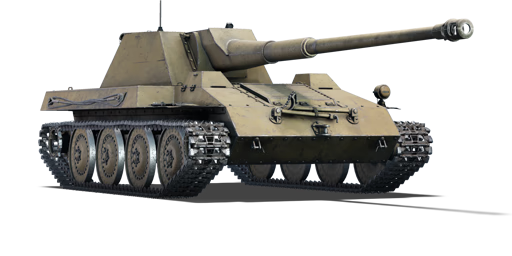



The Krupp-Steyr Waffenträger was a prototype tank destroyer developed as part of the Waffenträger (lit. "weapon carrier") programme. The Waffenträger programme was initiated in 1942 by the Wehrmacht, calling for a light, mobile tank destroyer armed with a powerful 88 mm PaK43 anti-tank cannon. Krupp's design, consisting of an open-top, fully traversable turret, was submitted in 1944, with at least one prototype being built. However, Krupp's design was rejected in favour of the design by Ardelt, and was discontinued as a result. The final fate of the sole prototype is unknown.
The Waffenträger was introduced in Update 1.71 "New E.R.A.". With its fully traversable turret, low profile, and 88 mm cannon, the Waffenträger is a versatile tank destroyer that can play many roles and offer new playstyles that are not possible with conventional turretless German tank destroyers. The infamous PaK43 cannon provides sufficient firepower to deal with any target the Waffenträger will face. The tank's compact profile allows it to use cover and terrain effectively. However, due to the lack of armour and modest top speed, the Waffenträger is incapable of taking hits, especially from HE shells and bombs.
| Ammunition | Type | Armor penetration (mm) at a distance: | |||||
|---|---|---|---|---|---|---|---|
| 10 m | 100 m | 500 m | 1000 m | 1500 m | 2000 m | ||
| APCBC | 237 | 234 | 222 | 207 | 193 | 180 | |
| HE | 19 | 19 | 17 | 16 | 14 | 14 | |
| HEAT | 110 | 110 | 110 | 110 | 110 | 110 | |
| APCR | 279 | 273 | 252 | 227 | 205 | 185 | |












Mobility | |
|---|---|
Protection |
|---|
Firepower | |
|---|---|